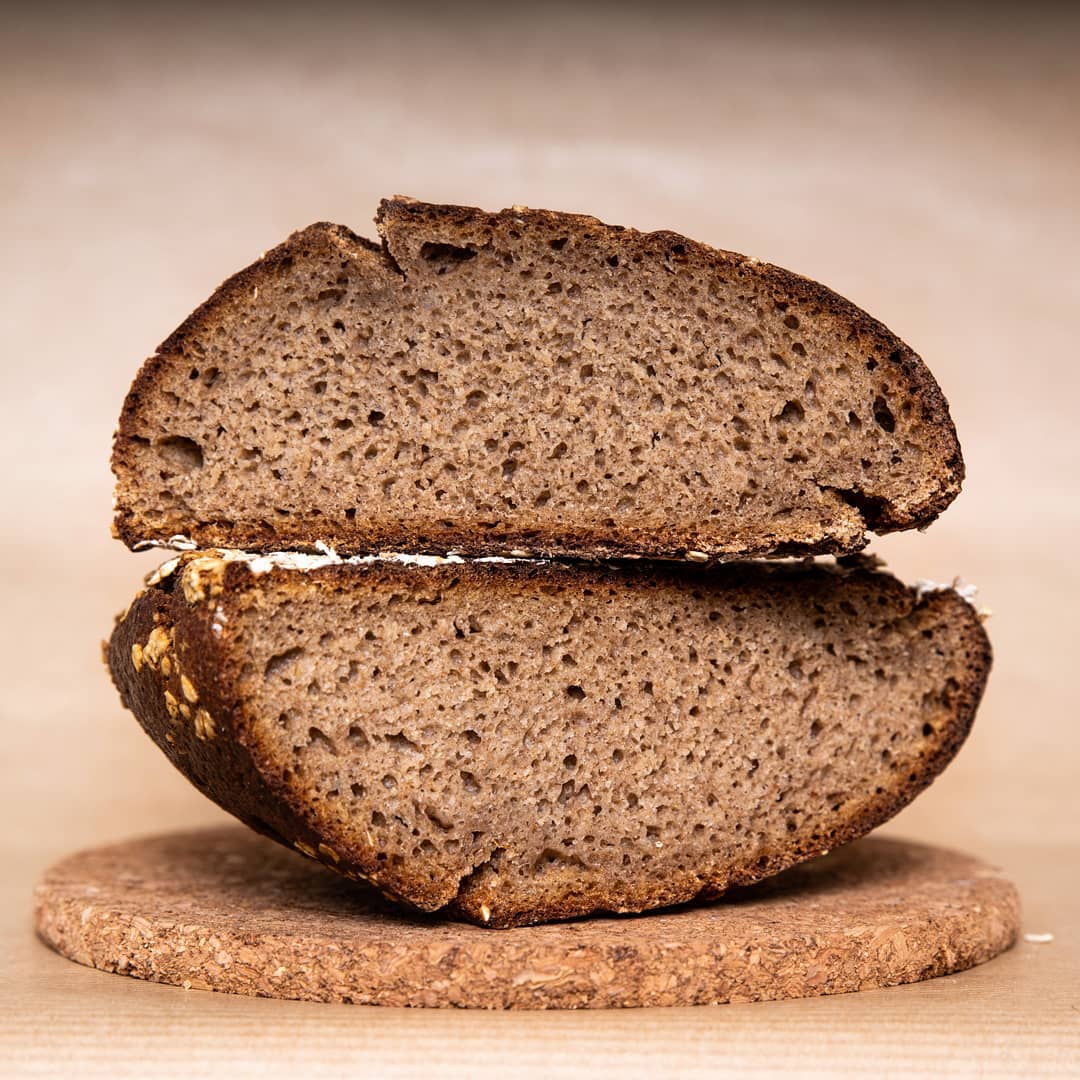Hey all,
I’ve seen a lot of these posts pop up on my front page and it’s honestly made me want to try getting into the hobby, however I tend to jump into hobbies neck deep and drop them shortly after. Is there any way to test the waters without going down the rabbit hole? It seems like you need a lot of equipment and experience to get the best results.
Another thing is that I tend to dislike store bought sourdough as I’ve found most of it to be too tangy/sour. Do all sourdoughs taste like this, or would it be fairly easy to control when making your own bread?
Edit: sorry, I should clarify. I’m specifically talking about sourdough. I’ve baked bread before (though it’s been a long time) but most of the really good looking breads here have been sourdough.
Ima be real.
You can absolutely make bread with no recipes, no training, and little or no guidance. It isn’t brain surgery. Water + flour + yeast + time×heat = bread. The only question is how good the bread will be.
Go to the store, pick up some yeast packets. Pick up a bag of bread flour.
Take two bowls of roughly equal size. Put a few cups of flour in one. In the other, put clean water until it feels like it weighs roughly the same as the one with flour.
Toss a few pinches of salt in the flour. Empty the package of yeast into the water. Walk away for about fifteen minutes. Come back and as long as the yeast is making a few bubbles, you’re good to go.
Mix it all up. Pinch it, punch it, roll it around a while. Get all the flour nice and wet, adding a little water if you need.
Walk away for a while. Check on it every fifteen to twenty minutes. Once it’s puffy, knock the air out of it, and roll it into a ball or a loaf shape and put it in a pan. Walk away and check on it until it’s roughly twice as big. Throw it in the oven, maybe 375 to 400. Bake it for a half hour or so, check on it to see if it’s done. Probably won’t be, but it never hurts to check. Poke a thin stick in. If it comes out gummy, keep cooking until it doesn’t.
When it isn’t, you’re done. Pull it out, let it sit. Wait a half hour minimum, then cut.
That’s it. That’s bread. Won’t be the best, won’t be inedible.
Thing is, if you do it again the next day, it might not come out exactly the same. That’s because precision is what gives you consistency.
But that’s how you test out bread making with minimum investment.
No bullshit, no joking, bread is simple. It was being made with zero precision before the written word.
The hobby of making bread, or the profession of making bread can be very complicated. But the hobby only needs to be as complicated as you want. If you want to chase your ideal loaf, and be able to produce it almost exactly the same every time, rabbit hole doesn’t describe it lol. But you can turn out consistent bread that will make people think you are the yeast god with nothing but a decent scale and a little light reading.
A scale and some bowls are all you need to make amazing bread. Bread that you’ll be proud of. That’s because once you get down to measuring ingredients by the gram, you’re as precise as you can get. Anything under 5 grams of difference, nobody is going to notice anyway. Most of the time, except for salt, anything under 10, and they won’t notice.
The rest is technique. Learning when to stop kneading, temperature and time, that kind of thing. You can’t buy gear to give you that. You can buy gear to make it take less time, but that’s a different thing.
As far as the sourdough goes, yeah. You can control the tang fairly easily. It’s all about how you feed your starter and how you ferment the dough once you’re using the starter. You can make bread with such a low degree of acidity that you’d have to know it was sourdough to tell it is. Just feed the starter well with heavy discarding, and the bacteria that make it tangy won’t have time to produce the acid in the starter. If you then do fast fermentation, they won’t have time to do it in the loaf. But, tbh, at that point, you might as well just buy some yeast. Part of the point of sourdough is that acid.
But damn, once you do get the basics down and you’re turning out bread that’s exactly what you wanted, every time? That’s fucking gold. It’s worth the precision and the fiddling around. Hobby or not, you can get to that point in less than a year of practice at home. Less at a bakery with guidance. You’ll get to where you don’t worry about recipes because you can feel the flour and adjust the water in the mix to account for humidity. That does take a hundred loaves or so, but that’s doable.
You’ll get plenty of control as you learn, if you want to
The biggest requirement is the starter. After that, you really just need a bowl to mix and proof the dough, and a baking sheet or stone to cook on. Dutch ovens, proofing baskets, lames, etc are nice to have, but not necessary to make great bread.
I agree. Anyone with starter is going to be delighted to share. A digital kitchen scale for $20 is probably the most essential equipment you may not already have that you’d need for good results, and a bench scraper is handy for this and lots of other baking. I use a dutch oven, but just scissors instead of a lame, and prove in a mixing bowl. Other than that just get a bag of bread flour and try it out!
Thanks! On another note, are all sourdoughs super tangy? Not sure if it’s just the mass produced baguette I had (was white and spongy, don’t remember the brand).
No, there are lots of ways to make the bread more or less tangy. Feed your starter with bread flour instead of whole grains will reduce the acid for you. You can also increase the amount of starter in a recipe to reduce proof time, and proof at room temp.
Try with dehydrated yeast first. Then once you have a passable loaf start replacing the yeast with starter.
My go to recipe (whole wheat):
80% hydration 1.5% salt 8% fat “Some” yeast (maybe a tablespoon, I don’t measure).
For 600 grams of flour that is around (from memory):
480 grams water 8 grams salt 48 grams oil (usually olive oil but I ran out and was using avocado oil) 1 tbsp of yeast
Mix it (in a bread machine if you want). Put it in a floured bread form in a plastic bag in the fridge overnight
Next day, set the oven to 550 degrees for about an hour (if you have a pizza stone or steel, so it can warm up).
When you are ready to bake, turn the oven to 400 degrees.
Upturn the bread onto parchment paper
Score the top deeply.
Bake for 40 minutes, Tapping on the bottom should sound hollow and internal temperature should be around 195f.
After it is baked, put it in an air tight bag to cool down.
Don’t cut it until it is about room temperature.
Do you have a dutch oven? There are a lot of easy yeast bread recipes out there that just require: standard oven, Dutch oven, parchment paper, mixing bowl, yeast, flour, salt. I would highly recommend that for beginners.
I personally would stick with yeast and baking soda/powder recipes at first. Irish soda bread is another beginner-friendly recipe IMO. Save the sourdough for later (unless you really want to do sourdough, but it sounds like you don’t like it much anyway?)
I would also add: the other route is to get a loaf pan (even a disposable one is fine) and a meat thermometer (which you should have on hand anyway, especially if you cook meat), and maybe a large wooden spoon or Danish dough whisk for stirring (but you can also use your hands).
Baking is wonderful because there’s a lot you can do with really basic tools (it’s been around since basically the dawn of civilization!). Of all the hobbies this one is actually pretty equipment-light.
I can’t recommend Ken Forkish’s work enough.
https://youtube.com/playlist?list=PLWqTac5vy0ccDS1L77LCJ0loOGK3_iTH-
He gives a good way to get started and ways to improve or riff on the recipes.
Plus you can do it with commercial yeast if you, like me, don’t particularly like sourdough.
I’ll check it out, thanks!
To get the best results you need a lot of experience and equipment for every thing you do. I think that is the wrong expectation for testing the waters.
You probably already have an oven or a air fryer, if you’re OK with a OK quality instead the best this is all you need. Buy some flower and yeast and start wit small breadrolls first.
Yeah that’s fair. I should’ve been more clear that I’m not looking for perfect, just something that won’t discourage me from trying again. Thanks for the advice!



